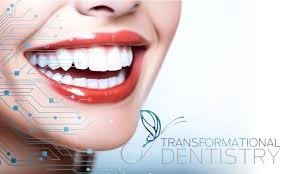Digital Smile Design (DSD) is transforming the world of cosmetic dentistry and the way we perform smile makeovers. Dental professionals use this tool not just for aesthetic reasons but for functional purposes too. DSD is a way to plan out the smile. By using advanced technology and the art of dentistry, practitioners can use this tool to correct what goes wrong when it comes to a person’s smile. Excellence in function and look is the goal, but in the real world, mastering the art and using the most advanced technology ensures that our patients look great and that their oral components also work as healthfully as we would want them to.
Comprehensive is the word that best describes what Digital Smile Design is all about. It’s a comprehensive digital technology that facilitates the treatment planning (visualisation) and rehabilitation (execution) of dental procedures. As in architecture, urban planning, or auto design, digital tools are used to create detailed 3D models of the patient’s dental-facial structure. These tools are then used to facilitate both a thorough analysis and the actual design work that goes into creating an ideal smile.
The DSD procedure starts with a thorough conversation—essentially, the dentist’s getting-to-know-you moment. This is when they obtain not just high-resolution photos and videos of your face and at least an adequate amount of your mouth, but also a good understanding of your life as their patient. Accurate digital images are the first step toward creating a precise model that will reflect your current dental condition and at least something that approximates the appearance of the rest of your face. Those are the raw materials that are worked over and with, first by the dentist-economist and then by the software-specialising virtual dentist to assess your dental and facial proportions.
This data allows the dentist to create a tailor-made appearance for the patient’s smile. And most importantly, it allows us, the patients, to become an integral part of the design process. Once we’ve “settled into” the basic appearance of our new smile, we can then explore what it might look like if we made slight changes to the shape, size, and appearance of our teeth.
When the patient consents to the projection of their prospective smile, the dentist develops a comprehensive treatment strategy. This outlines what is involved—in the patient’s set of circumstances—to remedy both the appearance and the function of the patient’s dentition. Such procedures may indeed involve a set of diagnostic tests (a mockup of the new appearance or even using a digital treatment simulation) and a “smile design” so that when the patient consents, they do so to a prospective appearance and to an overall course of procedures that aim to get them there.
Once treatments are finished, the smile design process isn’t over—there are follow-up appointments to make sure that the patient is delighted with their results. Digital Smile Design is an individualised process; it allows every single patient to have a custom and on-the-spot smile, which ties back to the functional and aesthetic issues they came in for. Patients participate fully in the process, just because they can see the preview of a new smile that the dentist has in mind for them; therefore, the lead-up photo helps them to understand what the dentist has planned.
Careful and precise planning enhances the chance of predictable results.
Orthodontics and prosthodontics are just two of the many disciplines Dentistry embraces, and both contribute to DSD’s “total” approach to the enhancement of the appearance of a smile. While one might take “Dentistry is art” as a truism, DSD takes the robust format of schematic tooth forms and facial perspectives presented three-dimensionally and works it on a computer, with the 3-D aspect reversed (flipped). There’s beauty in technology … yet in selecting this as our theme for our inaugural issue, we’re likely to be told there’s beauty in the synergy of DSD and the human brain.
Dentists who adopt Digital Smile Design lead this change, giving patients top-tier performances of care and exactness. To summarise, Digital Smile Design improves more than morale through bettered smiles; it betters lives. It betters anyone’s life who steps out of a clinic post-operation with a smile they love to show off (and these smiles are now more common than ever due to this thing called predictive design—more on that later).















